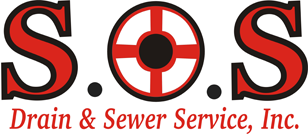A sewer backup occurs when wastewater from the sewer system reverses into homes or businesses, often due to blockages or heavy rainfall overwhelming the system. Addressing these issues swiftly is crucial to prevent a host of severe consequences.
Immediate action is necessary to mitigate health risks posed by exposure to harmful bacteria and viruses, which can lead to significant health problems. Moreover, sewer backups can cause extensive property damage, endangering structural integrity and ruining personal belongings.
Beyond individual concerns, the environmental impact is profound, as untreated sewage can contaminate water sources, harming local ecosystems. This blog post will delve into these issues, emphasizing the importance of quick intervention to avoid escalating problems and costs.
What is Sewer Backup?
Sewer backup occurs when water and waste materials flow from the sewage system back into homes or businesses through their plumbing fixtures, such as toilets, sinks, and showers.
It often happens due to blockages in sewer lines or water overflowing from manholes during heavy rainfall. The wastewater can contain various hazardous substances, such as bacteria, viruses, and other pathogens, making it a health hazard.
Also, the sewage water can damage property, leading to costly repairs. The longer the problem persists, the more extensive and expensive the damage becomes. And it’s not just about the immediate consequences; untreated sewage can seep into underground water sources, polluting them and posing long-term environmental risks.
What are the Reasons Sewer Backup Happens?
There are various reasons why sewer backup occurs, ranging from tree root intrusion to aging infrastructure. Some of the most common causes include:
- Clogs: Solid materials like grease, paper products, and foreign objects can block sewer lines, causing backups. These clogs often occur in older systems with deteriorating pipes.
- Heavy rainfall: During heavy rainfalls or storms, excess water can enter the sewer system through cracks or leaks in pipes, overwhelming it and causing backups.
- Tree root intrusion: Tree roots can penetrate small holes or cracks in sewer lines seeking water and nutrients. As they grow inside the pipes, they can cause blockages leading to backups.
- Structural problems: Sewer line collapse or breakage due to aging or shifting soil can cause a sewer backup.
- Blocked municipal lines: Issues in the main municipal sewer line can also result in backups for multiple homes and businesses connected to it.
Identifying the root cause of the problem is critical to effectively addressing it and preventing future occurrences. Regular maintenance and inspections can help identify potential issues before they escalate, saving property and health risks.
Why Is It Important to Address Sewer Backup Issues Quickly?
The quicker a sewer backup issue is addressed, the better for all parties involved. Not only does quick action prevent significant health risks and property damage, but it also reduces the overall impact on the environment.
Health Risks of Sewer Backup
Sewage backup poses significant health risks as it contains a mix of human waste, chemicals, and other harmful substances. Exposure to this contaminated water can lead to various illnesses, including:
- Gastrointestinal issues: The bacteria and viruses in sewage water can cause diarrhea, vomiting, and stomach cramps.
- Skin infections: Contact with sewage water can result in skin irritation or infection due to its corrosive nature. This can be especially dangerous for individuals with open wounds or cuts on their skin.
- Respiratory problems: Inhalation of sewage fumes can cause respiratory issues, including asthma attacks and bronchitis.
- Hepatitis A: Sewage water can also contain the hepatitis A virus, which causes inflammation of the liver and can lead to severe illness or even death in some cases.
These health risks highlight the urgency of addressing sewer backup issues quickly. The longer the exposure to contaminated water, the higher the chances of developing these preventable illnesses.
Property Damage
Aside from health risks, sewer backups can also cause extensive damage to properties. The wastewater can seep into floors, walls, and furniture, leading to mold growth and structural damage. It can also ruin personal belongings, such as clothing, furniture, and electronics.
Moreover, if not addressed promptly, the excess water can weaken the foundation of a building, leading to costly repairs or even collapse. This can be especially dangerous for older buildings with weaker structures.
Additionally, sewer backups often result in foul odors that are difficult to eliminate and can significantly decrease property value. These damages can quickly add up and become extremely costly if not addressed swiftly.
Environmental Impact
In addition to health risks and property damage, sewer backups also have a significant impact on the environment. When sewage water overflows into streets or bodies of water, it contaminates them with harmful substances, including bacteria and chemicals.
This contamination can harm local ecosystems, affecting plants and animals. It can also pollute water sources that communities rely on for drinking, fishing, and recreation. This not only affects the immediate area but can also have far-reaching consequences for other areas downstream.
Furthermore, the clean-up process for sewer backups often involves the use of harsh chemicals that can further harm the environment if not properly contained and disposed of.
Cost Implications
Aside from the direct costs associated with health risks, property damage, and environmental impact, there are also indirect costs to consider when addressing sewer backup issues. These include:
- Evacuation expenses: In severe cases of sewage backup, individuals may need to temporarily evacuate their homes or businesses, resulting in additional expenses for accommodation and other necessities.
- Lost income: Businesses may have to close down during the clean-up process, resulting in lost income.
- Insurance premiums: Frequent sewer backups can lead to increased insurance premiums, making it costly for individuals and businesses to protect against future incidents.
The longer a sewer backup issue persists, the higher these costs become. Quick intervention can help reduce these expenses significantly.
These reasons highlight the importance of addressing sewer backups quickly and effectively, not only for individuals and businesses but also for the overall health of communities and the environment.
How Can We Prevent Sewer Backup Issues?
Sewer backup issues can be costly, sewer backup issue is addressed. However, there are steps that individuals and communities can take to prevent these problems from occurring in the first place.
Proper Waste Disposal
One of the most effective ways to prevent sewer backups is by practicing proper waste disposal habits. This includes avoiding flushing items such as wipes, feminine hygiene products, diapers, and paper towels down the toilet. These items do not break down easily and can cause clogs in sewer lines.
Additionally, it is crucial to dispose of household chemicals properly. Pouring them down drains or toilets can damage pipes and harm the environment.
Regular Maintenance and Inspections
Regular maintenance and inspections of sewer systems can also help prevent sewer backup issues. This includes cleaning out pipes and removing any potential clogs or blockages. It is recommended to have a professional drain cleaner inspect the system at least once a year.
Identifying and addressing minor issues early on can prevent them from escalating into more significant problems that are costly and time-consuming to fix.
Proper Landscaping
The landscaping around a property can also play a role in preventing sewer backups. Trees with large root systems should be planted away from sewer lines, as their roots can grow into pipes and cause damage. Additionally, avoid planting bushes or shrubs over underground utilities to prevent damage from root systems.
Install Backwater Valves
Backwater valves are devices that prevent sewage from flowing back into a property. These valves can be installed in the main sewer line and will automatically close if the flow of water is reversed, preventing backups.
These valves are especially useful in areas prone to heavy rainfall or flooding, as they can prevent excess water from entering the sewer system and causing backups.
Proper Pipe Installation
Proper pipe installation during construction or renovations is crucial in preventing future sewer backup issues. Pipes should be installed at a slope to allow for proper drainage and prevent clogs. They should also be made of durable materials to withstand the pressure and potential damage from tree roots.
These preventive measures can help reduce the risk of sewer backups and save individuals, communities, and the environment from potential harm and costs.
Tips for Dealing with Sewer Backup
If you do experience a sewer backup, here are some tips to keep in mind:
- Avoid contact: Do not come into direct contact with the sewage water to prevent exposure to harmful substances.
- Turn off electricity and gas: If the backup is significant, it may be necessary to turn off your electricity and gas to avoid potential hazards.
- Contact professionals: Contact your local utility company and a certified drain cleaner as soon as possible. They can help assess the situation and provide guidance on how to address the issue safely.
- Document damages: Take photos of any damages caused by the backup for insurance purposes.
- Dispose of contaminated items properly: Any items that have come into contact with sewage water should be disposed of properly to prevent further contamination.
It is also essential to prioritize personal and community health by reporting the incident to local authorities and following their guidelines for safe clean-up and disposal of the contaminated materials.
Choose SOS Drain and Sewer Cleaning Services for All Your Residential Drain and Sewer Needs
At SOS Drain and Sewer Cleaning Services, we have been providing top-quality residential drain and sewer services to clients in Minneapolis, St. Paul, and the entire Twin Cities area for many years.
We understand that drains and sewers are often overlooked until a problem arises, which is why we offer a wide range of services to ensure your home’s plumbing system is functioning properly.
Our team of experts can handle various clogged drain issues such as kitchen sink drains, bathroom drains, floor drains, and more. We also offer sewer cleaning services to keep your main lines free from blockages caused by tree roots or foreign objects.
Contact us now to learn more about our preventive maintenance programs and call us for a same-day service or emergency situation. We are available 24/7 to handle any drain or sewer issue that may arise.
FAQs
Why should sewer backup issues be addressed quickly?
Addressing sewer backup issues quickly is essential to prevent the overflow of raw sewage into your home. Sewer line cracks and aging sewage systems can exacerbate the problem, leading to major damage if not resolved promptly.
How do aging sewer systems contribute to sewer backups?
Aging sewer systems are a common cause of sewer backups. Over time, sewer pipes and main sewer lines can deteriorate, leading to blockages and sanitary sewer backups. Regular maintenance of the municipal sewer system can help mitigate these risks.
What role do floor drains and sump pumps play in preventing sewer backups?
Floor drains and sump pumps are crucial in managing excess water and preventing sewer backups. When multiple drains are affected, these systems work to redirect water away from your property, minimizing the impact of sewer drain issues.
How can municipal sanitary sewers prevent sewer backups?
Municipal sanitary sewers are designed to handle the flow of wastewater efficiently. However, if there’s an issue with the municipal sewer system or main sewer lines, it can lead to backups. Quick repair of sewer line cracks and consistent maintenance are vital to avoid such problems.








